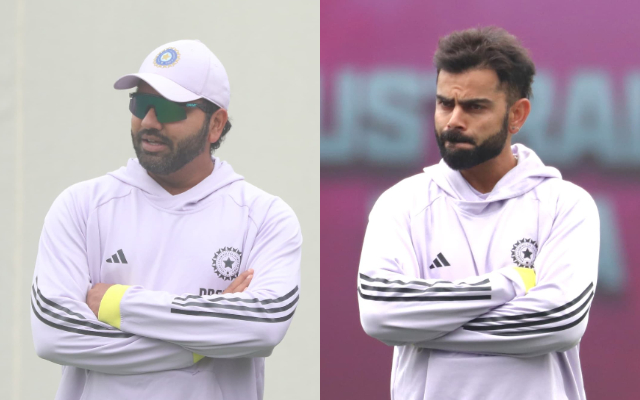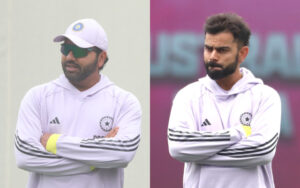
Cricket is a team game and Australia played like one, under the stewardship of a captain, who led from the front, galvanised his unit and marshalled his resources towards the unified goal of winning back the Border-Gavaskar Trophy after a decade
India, on the other hand, were forced to play under three captains and chopped and changed their team reactively, without addressing the primary challenges at hand.
Barring the God-sent Bumrah and the spirited Yashasvi Jaiswal, no other Indian player consistently showed up to the party Down Under. Rohit Sharma did the brave and selfless thing by standing down for the ultimate test and one must laud his candour but in hindsight, did we hurt our chances by disturbing our winning combination at Perth?
Prior to this series, India had won at Perth only once and had won a series opener in Australia only once in 2018, but had never won a series opener at Perth, that too by a mammoth margin of 295 runs.
The D/N Test in Adelaide was always going to be tricky for the visitors given that we hardly play with the pink ball. India had two batting collapses there, instead of one at Perth, thanks to the merciless attack from Starc, Cummins and Boland. On the batting front, it was a Travis Head show, who capitalised on the two dropped chances.
After the two matches, one could clearly see the gulf in the approach to captaincy as well – Bumrah was far more aggressive, agile and creative in his approach, both in terms of team selection, field setting and bowling changes.
By this juncture, it was clearly evident that our top and middle-order had become synonymous to batting collapses, with our team folding up below 200 on 24 occasions in the last 5 years, 13 off which have come in the last two years. That is nearly about 1 in 3 times they come out to bat.
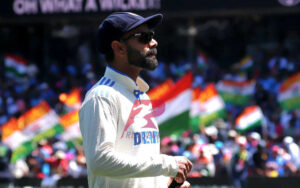
At the heart of the issue was Rohit, Virat Kohli and Shubman Gill’s inability to lay a foundation for a solid total, especially when they had looked past Cheteshwar Pujara and Ajinkya Rahane for reasons pertaining to performance, age and succession planning.
From 55 at its peak, Kohli’s career average has slipped down below 47. In the last 5 years, he is scoring just about 30 runs per innings every year, way below par in comparison to his maximum averages of nearly 76 in two consecutive years in 2016 and 2017.
Barring the solitary, hard-fought ton at Perth, his batting approach has become synonymous to being a ‘chase master’, a phrase that was once attributed to him in a positive connotation for the manner in which he dominated match-winning chases, especially in the shorter format of the game.
Not only does he share the dubious distinction of 10 single-digital dismissals for a top 7 batter in a single Test season, along with Rohit, he now also tops the list of most caught dismissals to outside-off-stump deliveries versus pacers in a Test series; eight of them in this Border-Gavaskar Trophy. He managed to score just 69 runs in 9 innings at an average of 8.6 against those deliveries.
His catching is also slipping for over the last couple of years, wherein he drops more than 1 in 3 chances, the highest amongst slip fielders globally.
He may still be one of the fittest Indian cricketers to be around, but fortunately or unfortunately, six packs matter little in cricket. Hand-eye coordination counts for more and either age is catching up, as it does with everyone, or is it a function of match practice?
To me, it is unpardonable that the two legends in Kohli and Rohit haven’t played a Ranji Trophy match since 2012 and 2015 respectively. Not only does it not help their Test cricket but also sends out wrong signals and sets wrong precedent.
If not, give up their spots to the next generation of players like Abhimanyu Easwaran, Devdutt Padikkal, Sarfaraz Khan, Sai Sudarshan, Dhruv Jurel etc, who spent most of the series warming benches and carrying drinks. The only way Rohit and Kohli can take forward their Test careers, is by re-igniting their love for the game in the domestic circuit.
It may be a tad bit late given their respective age, but that’s the only viable option, else it will hurt them, the team and us fans to see two of our heroes fade out as mere shadows of their great selves.
What was most disappointing though, was to see Gill’s lacklustre performance and the callous ways of his dismissals.
For the Latest Sports News: Click Here
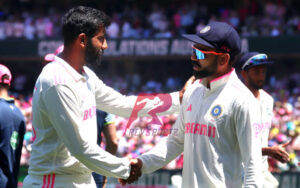
For a gifted batter like him, who is touted to be the future of Indian batting, he has averaged just 32 over the last 5 years. Barring the heroic 91 at the Gabba in 2021, he averages a modest 23.8 overseas, with just one century outside Indian soil, in Bangladesh.
Beyond the lack of runs, the way he gave up his wickets at Sydney on both occasions, is the larger cause of worry. Shouldn’t there be a massive price to the wicket of a number 3 Test batter and more accountability?
We saw flashes of brilliance from KL Rahul, Rishabh Pant, R Jadeja, Washington Sundar and of course the young Nitish Reddy, but none of them could consistently win or save matches for us. Remember, cricket is a team game, where individuals have to rise and shine to help the collective succeed.
In fact, questions will be asked about the roles, positions and approaches of the above players. Isn’t Pant better off being completely unshackled, even at the cost of looking silly and stupid, because perhaps his approach to being responsible is different? I believe every 3-4 matches, he will produce a match/series-turning performance that no one in this team has the ability to do.
What is the future of Jadeja? Is he still capable of giving us wickets or do we need to invest in the likes of Axar Patel, Kuldeep Yadav, Manav Suthar or Tanush Kotian for future tours?
Who in this current team will have the role of blunting the new ball ala Dravid and Pujara by facing 100 odd deliveries, so that others can capitalise? Will Rahul be up for that role given his control to defend and leave?
If Washington is hardly going to be bowled, why not pick another bowler or open the slot for a better batter? Is Nitish the genuine wicket-taking bowling all-rounder that the team needs or will be competing for a top 5 batting position given his century at the MCG?
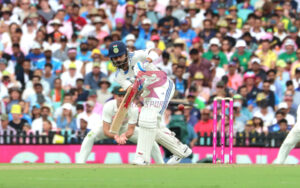
Sometimes a good performance or two ends up acting as a red herring, thus misleading us from ascertaining the potential of the individual and his/her fit in the team’s cause.
Australia, on the other hand, does this proactively and very well. They ushered in two debutants mid-series to fix what wasn’t working for them, the opening slot and the all-rounder in the middle.
Whilst Sam Konstas did give a heart-stopping debut performance in Melbourne, Beau Webster’s show with both bat and ball in Sydney, looked far more organised, reassuring and impactful.
Their core batters also dug deep and found a way to show up when it mattered. Most of their top 7 averaged between 25-33 in the previous 10 innings prior to this series, but each of them played at least two impactful innings that moved the needle.
Head once again was the prime thorn in India’s path with two tons and fifty that he scored nearly at run-a-ball; Smith came back to form with two centuries and nearly crossing the hallowed 10,000-run mark; Marnus rode his luck and patience to cross fifty on three occasions and Carey and Khawaja made an important fifty each.
But Test matches are won by teams who can take 20 wickets in quick time and this is where India lacked by a mile in comparison.
Whilst we are blessed to have the best fast bowler in the world, who has already entered every possible best bowler chart, broken numerous bowling records and nearly broke his own back after delivering 908 balls to pick up 32 wickets at just 13 a piece, every 4 and a half overs, the heart-breaking fact is that he didn’t have any meaningful support from the other end.
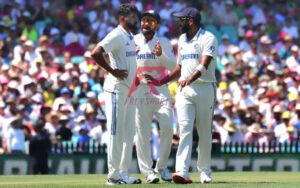
Mohammed Siraj put on a spirited fight in two sessions across the series, but barring that sprayed the ball in every direction and leaked runs; so did Harshit Rana, Nitish and Prasidh Krishna.
Akash induced plenty of false-shots but failed to convert them. Nitish had to wait for batters to err, whilst Jadeja and Washington hardly got any purchase and R Ashwin just wasn’t given another chance despite a decent outing at Adelaide.
If people felt that Bumrah was over-bowled, they will be stunned to realise that Pat Cummins steamed into bowl an extra 94 deliveries in total and scalped 25 priceless wickets, typically to break the middle-order and stop the tail from wagging too long.
Australia is blessed to have Boland as the world’s best reserve bowler, who selflessly delivers every time Josh Hazelwood is injured, very well knowing that he will be back in the dugout despite his performances.
Imagine, taking 21 wickets from 6 innings at a Bumrah-like average and strike rate? He would be the strike bowler in any other side.
Starc got 8 of his 18 wickets at Adelaide alone, his favourite hunting ground and the miserly Hazelwood features in the top 8 bowlers across both sides despite bowling in just 3 innings. And Lyon, the highest wicket-taker in the history of Border-Gavaskar Trophy, didn’t need to be in the thick of things, to beat India.
That’s how lethal and impactful this Australian unit was. Remember, cricket is a team sport. But unfortunately India hasn’t prioritised the team in this format and neither has it fixed the cracks in its batting, nor has it managed the transition or workloads of its bowlers.
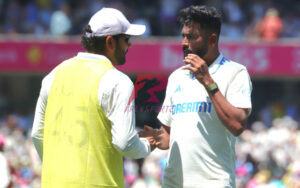
Team India end this ICC World Test Championship cycle on a disastrous note after losing 7 out of the last 8 matches, including the first-ever whitewash in a three-match series at home, as well as a first home-series and a first Border-Gavaskar series defeat in more than a decade.
Australia on the other hand, under the able leadership of Cummins, currently holds the bilateral series against every opponent they have played in men’s Tests. They will now head to Lord’s in mid-June to defend their WTC title against the Proteas.
The world’s richest cricketing body, with one of their own heading the global cricketing office and with billions in its war chest, has its work out as far as planning the future of India’s Test cricket is concerned.
Can we not have a dedicated squad for Tests that is incentivised just to play the long format? Can part of the massive broadcasting revenue streams not be allocated to provide facilities, resources and cash incentives to this unit?
Can schedules be managed in such a way that players from this squad have enough time to invest in domestic cricket as well as to be well rested for the major tournaments? Can we prepare home pitches that are optimised for our strengths? Can we move away from hero worshiping and prioritising what’s good for the team by focusing on performance-linked selection criteria?
Can we please remember that cricket is a team game. The players have to come together to accept, align and act on laying the right foundation for the future of Indian Test cricket?
Also Read: The SCG Pink Test: Where Cricket Meets Compassion and Courage


